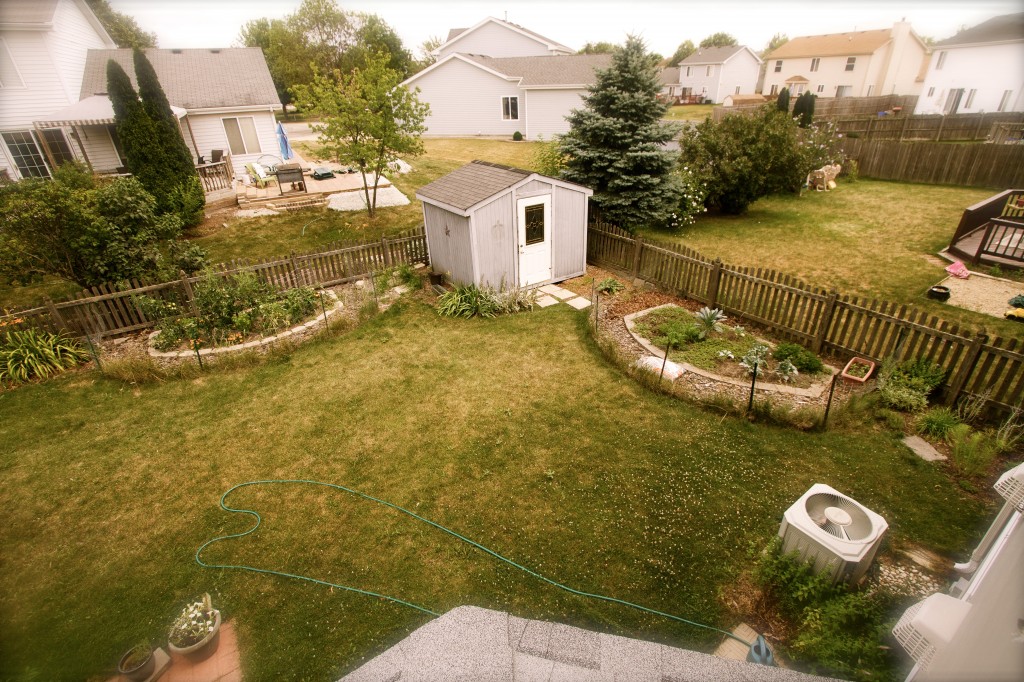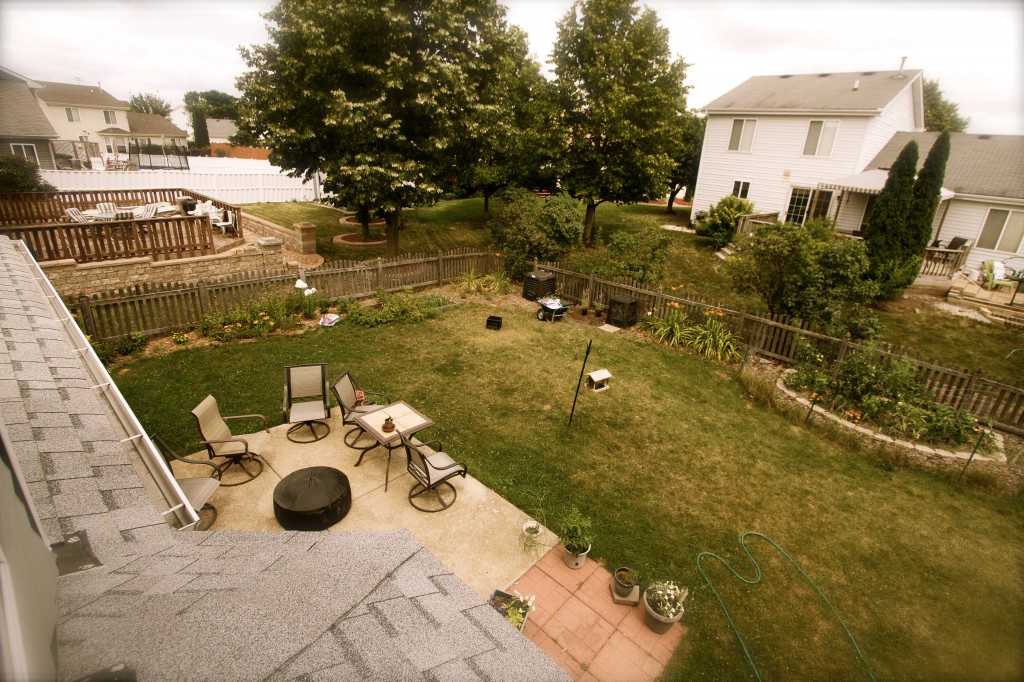I’ve always wanted to tend a piece of ground. I remember Sarah in The Secret Garden, who moves to her uncle’s estate and is sort of lost – a little girl in the vastness of a lonely house. She asks him:
“Might I have a bit of earth?”
“Earth!” he repeated. “What do you mean?”
“To plant seeds in—to make things grow—to see them come alive,” Mary faltered.
When I was little, I lived in a six-flat in Chicago,. A six flat is a three-story building, usually brick, with two “flats” or big apartments per floor. We lived on the third floor. (My parents still live there.) There’s a scrap of front lawn and a dark backyard next to the alley but mostly I gardened with my dad in big window boxes on our front porch, a brick balcony with a roof. There wasn’t much to do in this garden – we didn’t get many weeds and there wasn’t enough enough sun for tomatoes – but I liked watering, taking off dead leaves, and just smelling the plants in the dirt.
Now I live in a house in the suburbs and I have a real patch of earth, to garden and tend.
Gosh, these photos make it look like we have so much lawn! It’s not quite like that when you’re standing in it. You can see a few mysterious-looking objects; they are: a bird feeder, a wheelbarrow with a bad of mulch sitting in it, a black milk crate, two compost bins, and our fire pit with its black cover.
But my patch of earth isn’t just mine. It has history. Once, my yard was part of a vast stretch of prairie and wetlands. Indians lived here – most recently, the Potawatomi tribe. My yard could have been part of an area farmed by a tribal community. Then Europeans came and were active down around the rivers, starting in the 18th century, until eventually groups of White settlers, many from Vermont, moved into this area to farm. (All Indians were forced out of the state of Illinois in the 1830s.) My yard was farmed for decades; most recently, by the Lambert family. I the early 1990s, the Lamberts sold their farm to a building company, which stripped the topsoil off and built my subdivision, complete with parks, playgrounds, soccer fields, lake, and wetlands.
We bought our house in late 2009. We removed a play set and a sand box, and put in flower beds and raised beds for vegetables. We started adding compost to the thick, heavy clay soil left behind when the topsoil was removed, twenty years before. Adam’s parents brought us some prairie perennials from their place in Iowa and we got started.
There’s something powerful about caring for the soil and growing things in it. It’s not for everyone, but for me, it’s a connection to a bigger world, to the passing of time, and frankly, something to distract me when things happen in my life that I need distractions from. I can sucker tomatoes, prune roses (ouch!), pull out weeds, add more compost or mulch, spray thistles (which makes me feel like a traitor to my organic farming past), shake my fist at rabbits, put our kitchen trash in the compost bin, water in a dry spell, and otherwise manage the annuals and perennials, as some die, some survive, and some get unexpectedly straggly or sickly or otherwise need to be replaced.
My yard helps me feel like a steward and caretaker of the ground (Genesis 1:28-29, 2:15), although there are plenty of other things about my lifestyle that do neither. But having a patch of earth to take care of grounds me in life, death, dirt, water, and my own hands and legs. I can’t say it always looks great, but I’m grateful for it.





I echo everything in this post—except about suckering tomatoes. I didn’t know the name for it until now. It’s been an incredibly sunny summer in England (no, really!) and the garden is flourishing. Also, I like the idea of growing things on land that was once entirely dedicated to growing things, which is what our neighbourhood was before it became our neighbourhood.
Use IronX from Gardens Alive on the thistle, and you won’t betray the organic part of you 🙂